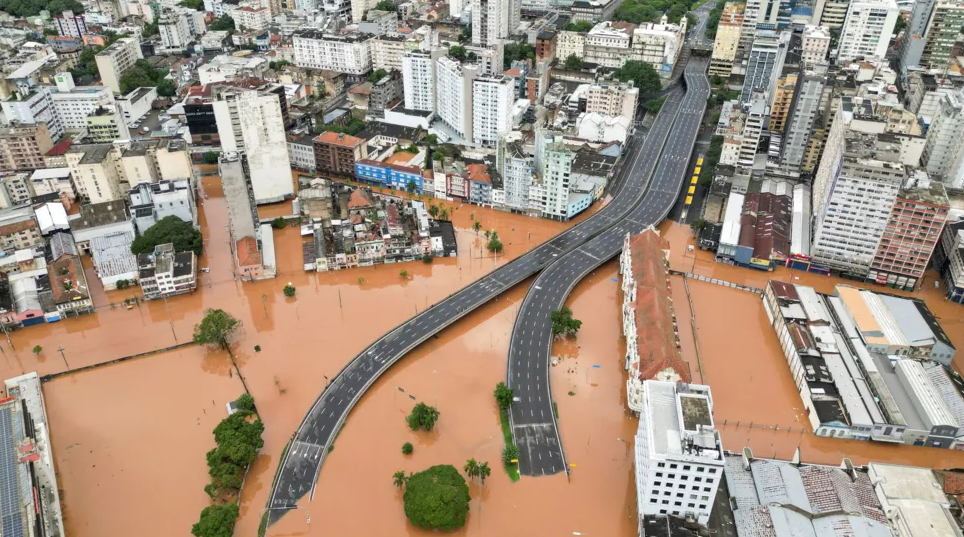
Nearly 25,000 residents have been forced to leave their homes in Rio Grande do Sul — the state in the most southern part of Brazil — since the storms began on Saturday 27 April. In certain cities, water levels are at their highest in 150 years, according to the Brazilian Geological Service.
However they have now said the amount of rain is now starting to reduce. A rare combination of average temperatures that are hotter than usual, along with high humidity and strong winds has led to the unusual weather.
The floods have caused landslides, collapsed bridges, and turned roads into rivers throughout the state. So far, 75 people have died and more than 100 people are still missing. The governor of Rio Grande do Sul, Eduardo Leite, said on Sunday: “I repeat and insist: The devastation to which we are being subjected is extremely serious.” But he said that the country’s emergency services and other workers are doing all they can to help everyone affected. He said on social media on Tuesday 7 May that 350,000 lives have been saved as a result of their efforts.
Why is this happening? Brazil’s National Institute of Meteorology have said it’s down to a climate phenomenon called El Niño. El Niño (which means ‘the boy’ in Spanish) makes global weather warmer. It happens when water in the Eastern Pacific heats up more than normal, and creates unusually hot and stormy weather. In contrast, global weather can at times be affected by El Niño’s sister, La Niña (the girl). This occurs when water cools down more than usual in parts of the Pacific Ocean, between South America and Australia. When the sea surface temperature drops by around 3-5 degrees Celsius, La Niña is declared. This leads to cooler and drier weather on average. As such, until recently, Brazil was experiencing a lot of drought as a result of La Niña.
原创编写 版权所有 侵权必究! 每日更新 个性化阅读 英语飙升!1.What does the statistics in Para.1 show?
A The response of emergency services.
B The huge quantity of local people.
C The frequent unfavorable weather.
D The intense natural disaster.
解析:选D。D推理判断题。根据第一段内容可知,巴西南部暴雨致2.5万居民撤离,某些城市的水位达到了150年来的最高水平,由此可知,此次暴雨来势汹汹。故选D。
2.What helped cause the extreme weather in Brazil?
A High temperature.
B Dry and cool air.
C Low sea temperature.
D Gentle breeze.
解析:选A。A细节理解题。根据第二段中的“A rare combination of average temperatures that are hotter than usual, along with high humidity and strong winds has led to the unusual weather.”可知,巴西暴雨是由于罕见的高温、高湿度和强风共同造成的。故选A。
3.What does the underlined word “devastation” mean?
A Collapse.
B Destruction.
C Construction.
D Instruction.
解析:选B。B词义猜测题。根据第三段划线部分前文的“The floods have caused landslides, collapsed bridges, and turned roads into rivers throughout the state.”“75 people have died and more than 100 people are still missing”以及后文的“extremely serious”可知,这里讲的是,他们所遭受的“破坏”是极其严重的。故选B。
4.What’s the last paragraph mainly about?
A The influence of El Niño and La Niña.
B The forming of floods and storms.
C The introduction of two climate phenomena.
D The conclusion of Brazil’s flooding.
解析:选C。C段落大意题。根据最后一段首句“Why is this happening?”以及后文对El Niño和La Niña的介绍可知,该段主要介绍了厄尔尼诺现象和拉尼娜气候现象。故选C。